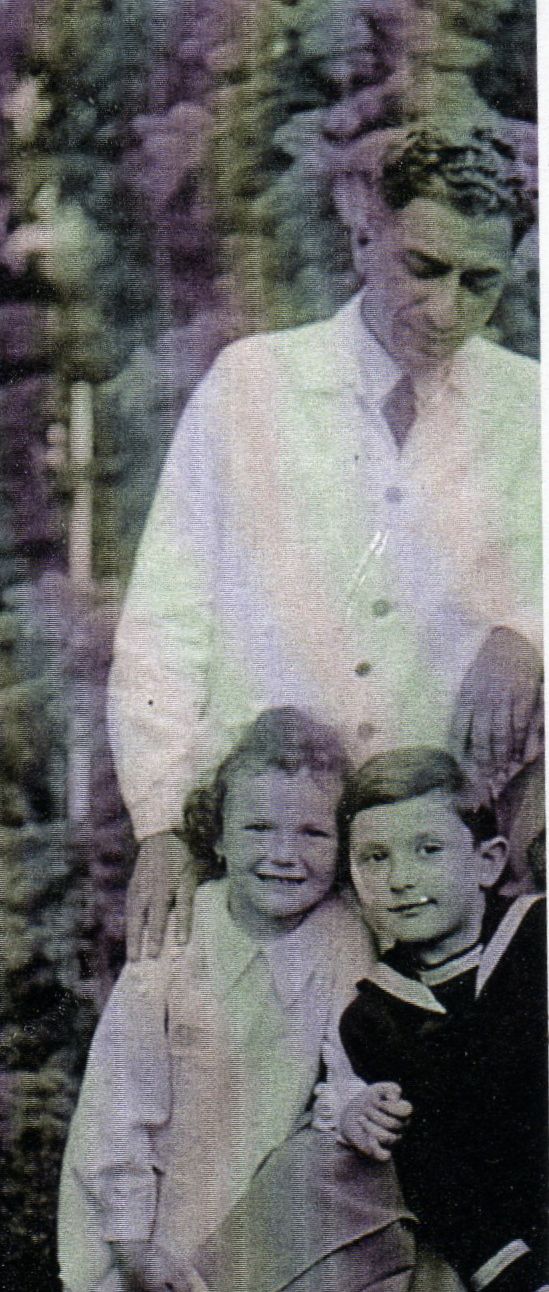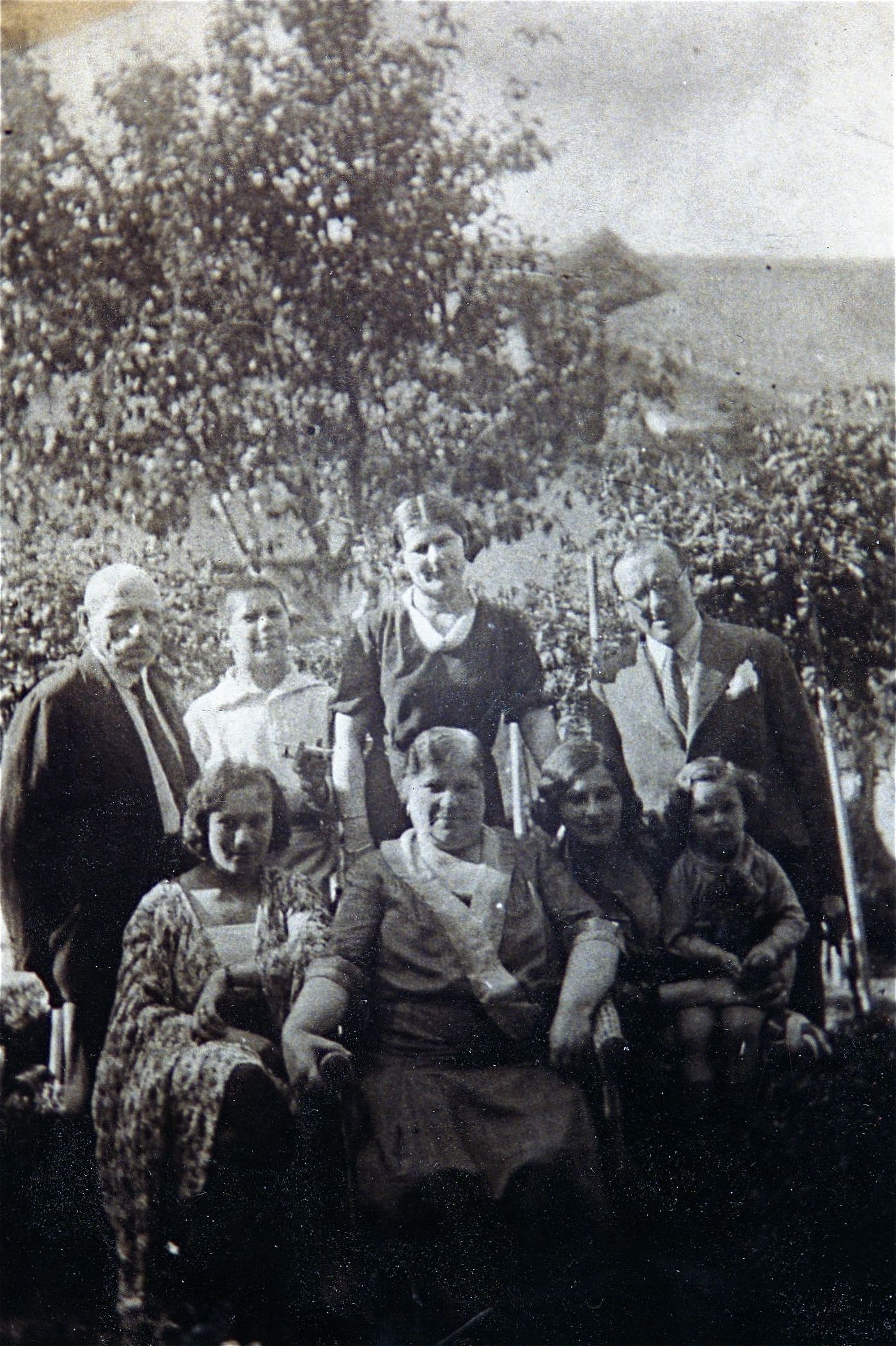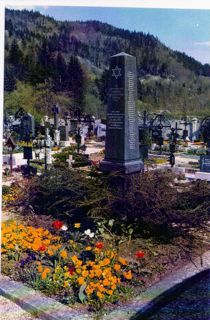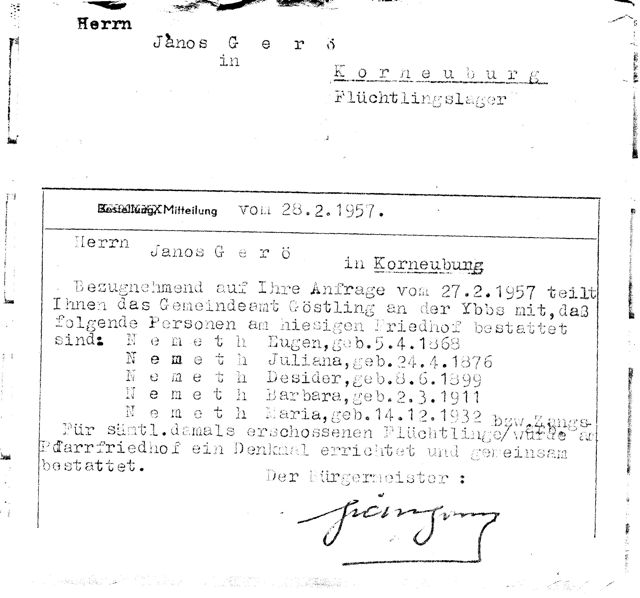The Németh and
Aniszfeld families
*Early in
2014, the webmaster received an e-mail from a gentleman in
Budapest regarding the ANISZFELD
family. I was able to put him in
touch with the Geroe family, and they are indeed cousins! They have exchanged photos, family
histories and updated their family
trees. As is sometimes the case, neither
branch knew very much about the other, and there was a great deal of relief and joy to
make the connection.
Below is
an abbreviated family tree, followed by
individual stories of two of the
two branches.
1) David ANISZFELD
(1844-1888) married Eszter SINGER
(1844-1890)
2)
Sandor ANISZFELD (1865-1926) married Fani DRUCKER
2)
Julianna ANISZFELD (1876-1945)
married Jenõ
NÉMETH
(1868-1945). The story of
this family is below: "Part of
My Heritage".
3)
Dezsõ
NÉMETH
(1899-1945) married
Borbala KERTESZ
(1911-1945)
4) Maria / Marika
NÉMETH
(1932-1945)
3) Margit
NÉMETH
(1901-1944)
married first Dr.
Jeno FENYESI, with
whom she had a
son, and second
Vilmos FEKETE,
who
died in 1944.
3) Borbala
NÉMETH
who married
Stephen GEROE
(1900-1993).
Descendants of
this family
live in
southern
California.
2) Hemina
ANISZFELD
married Gyula
SZOKE.
They had two
children and
two
grandchildren.
The two
grandchildren
both died in
1944.
2) Ilona
ANISZFELD
(?-1944)
married József
REISZ.
They had 5
children.
Descendants of
this family
live in
Hungary.
2) Endre
ANISZFELD;
changed his
surname to
AMBRUZS; had
the title of "Dr."
He married
Ilong
BERGI.
They had two
children.
2) Zsigmond
ANISZFELD
married Janka
KONIG.
They had two
children.
Descendants of
this family
live in
Hungary.
"Part of My Heritage"--The Németh
family
contributed by John Geroe
I am connected to
Hódmezõvásárhely through family
relations. My great-grandfather, David ANISZFELD, who
established
the Aniszfeld Hardware Corporation, settled there in
1864 and married Eszter SINGER. They had seven
children: sons
Sándor, who turned the Aniszfeld Corporation into one
of the
most prestigious enterprises in town, and
was a well respected President of the Jewish Community, Dr.
Endre
AMBRUZS, a renowned medical doctor, Zsigmond, and
József, a
veteran of World War I, who died of his wounds. Their
three
daughters were Hermina ANISZFELD SZÖKE, Ilona ANISZFELD
REISZ and
Julianna ANISZFELD NÉMETH, my maternal grandmother,
born in
1876.
My grandfather Jenõ
NÉMETH,
owner of a large general store, married Julianna
ANISZFELD. The
couple lived in Szentes and they had three children:
Dezsõ, who
became a dentist, Margit, and my mother, Boriska.
In
addition, my
aunt
Borbála (Barbara) KERTÉSZ NÉMETH, one
of two
daughters of Sándor KERTÉSZ, whose family
settled
in Hódmezõvásárhely
in 1830, and
Margit nee FUCHS,
was
born here
in 1911. Sándor (Alexander)
KERTÉSZ was a wholesale textile merchant.
Finishing in the
top of her graduating class, Borbála set out to go to
the
Medical School, but instead married Dr. Dezsõ
(Desider)
NÉMETH, a dentist in Szentes, and son of Julianna and
Jenõ.
My lovely cousin, Marika
(Maria), was their only child. Borbála's
sister, Iren
Aliz, married Dr. VARADI, an attorney, and they had two
children.
Following the German occupation of
Hungary on
March 19, 1944, the family was taken to a ghetto in
Szeged. From
there, in June 1944, they were assigned to one of the
Kasztner trains*
with the destination of Strasshof, Austria. From this
collecting
place, the German government sent my family to a farm town
in Western
Austria, Göstling an der Ybbs, for farm work.
With the front
approaching, on April 13, 1945, a few days before the
American Army
reached the town, the scared farmers invited the forced
laborers to
take shelter with them in their cellars. From the
group of
Jewish laborers, one woman was assigned to do the necessary
shopping
for
food. The rest of the group was readying to go into
the cellars,
and hoping the Americans would arrive shortly. During
this time,
Waffen-SS officer Ernst BURIAN and six SS troopers armed
with bazookas
and hand grenades found the group in their camp
quarters. They
machine gunned the entire contingency of 76 deportees.
The
youngest victims were aged two and four, while the oldest
victims were
Mrs. Hanni SCHIFFMANN, age 86, and my grandfather,
Jenõ
NÉMETH, age 78.** The only survivor was the
woman away
shopping.***
The victims were buried in a mass
grave in the
only Christian cemetery in town. After the war, a
commemorative
obelisk, inscribed on three sides with the names of all the
victims was
erected. After the 1956 Hungarian Revolution, when I
escaped to
Austria, I asked the Göstling an der Ybbs city
officials for
information about my relatives. The Mayor sent me the
information, including dates of birth of my immediate
NÉMETH
family. Later, I received pictures of the obelisk.
I'd like to say special thanks to
Judy
Petersen for her extraordinary work in keeping alive the
flame of our
Jewish heritage through her ShtetLinks page, and to
JewishGen, for
hosting this important and educational link.
*Webmaster
note: The Kasztner trains were the result of "blood for
trucks"
negotiations between a group of SS, including Adolf
Eichmann, and a
group of Jewish leaders (the Vaada),
including Rudolf (Rezsö) Kasztner,
in Budapest.
In
exchange for money, jewelry and valuables, in 1944 some 1700
prominent
and other Jews of Budapest, including several members of
Kasztner's
family, were taken to safety in Switzerland via a short stay
in a
special part of the Bergen Belsen camp. It is unknown
how much
money was actually transferred to the Nazis, but the
original request
was for 5,000,000 Swiss francs. In addition, as a
result of the
negotiations, during the deportations of late June 1944,
approximately
7 trainloads totaling a little over 20,000 additional Jews
from the
ghettos of Baja, Debrecen, Szeged and Szolnok were diverted
from transports to
Auschwitz and went
instead to Strasshof, Austria. From Strasshof, the
Jews were sent
to a number of communities in Austria where the Germans
badly
needed additional slave labor for industry and
agriculture. Their
treatment varied, but on the whole they were treated
relatively
humanely. About 75% of them, including children and
elderly,
survived.
**Szabolcs Szita: Trading
in Lives?
Central European University Press, 2005
***According to the website
<http://en.mauthausen-memorial.at> as
a result of the trials following WWII, Ernst Burian was
convicted and
sentenced to life imprisonment with hard labor. He was
released a
mere 9 years later as part of a general Nazi amnesty in
1957.








